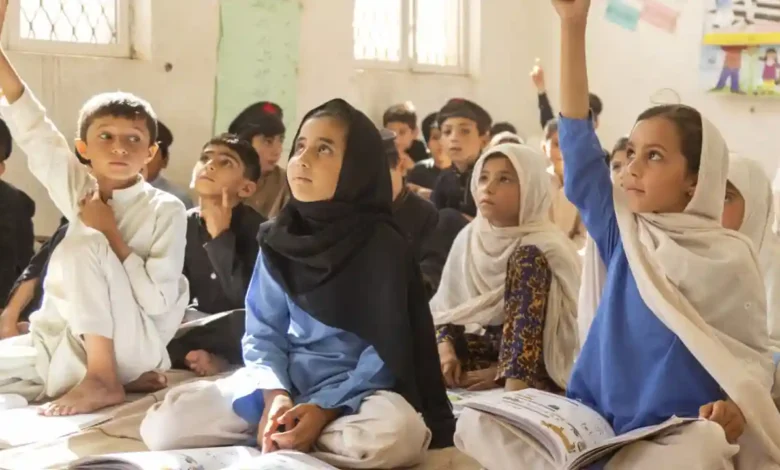Reforming Pakistan’s Education System For Growth

Pakistan is grappling with an alarming rise in unemployment, exacerbated by a multitude of factors, including the ongoing economic crisis, persistent power shortages, and the recent disruptions in wifi and internet connectivity. The lack of reliable internet access is particularly concerning in today’s digital age, as it stifles opportunities for remote work, freelance jobs, and access to online learning platforms that could otherwise help bridge the gap for many seeking employment.
Given these challenges, it is crucial that Pakistan not only addresses its immediate economic woes but also develops long-term strategies for reforming education system growth to create sustainable employment opportunities for its growing population. This focus on the future is essential, particularly because Pakistan is home to one of the largest youth populations in the world. An astounding 64% of Pakistan’s people are under the age of 30, and 20% fall within the critical age group of 15 to 29 years. With a total population exceeding 240 million, it is evident that millions of young people will soon be entering the job market, if they have not already done so.
Unfortunately, for these individuals, the current employment landscape is bleak. The withdrawal of major foreign companies and the closure of many small and medium enterprises (SMEs) across the country have left many without prospects. The lack of job creation, paired with a fragile economy, has created a perfect storm for Pakistan’s young workforce, many of whom are left without opportunities.
To address this growing crisis, various strategies have been proposed by economists, policymakers, and business experts. One of the most critical areas to focus on is reforming education system growth by addressing the fundamental flaws in Pakistan’s education and training systems. We must first take stock of what we are offering to the population and assess how we can improve these offerings to better meet the needs of the current job market.
The sad reality is that only about 50% of Pakistan’s population is considered literate, and the literacy rate is significantly lower for women and those living in rural or remote areas. Education remains a privilege for a relatively small percentage of the population, and access to higher education is even more limited. However, the problem extends beyond formal education. One of the key issues plaguing the workforce is the lack of technical and vocational training available to young people. Without the right skills, they are unable to compete for jobs in industries where specialized knowledge and expertise are in high demand.
Read Also: Food Price Surge
Global employers are increasingly looking for workers who are proficient in technical fields such as information technology, engineering, and advanced manufacturing. Pakistan’s unreliable internet infrastructure only compounds the problem by limiting access to remote learning, online certification programs, and digital employment platforms. As a result, Pakistan’s youth are being pushed further into an already challenging job market where they struggle to compete with better-trained, more technologically adept workers from other countries.
One of the solutions proposed by experts is to establish a network of technical education centers across the country. These centers would target individuals who have completed their matriculation or FA exams and provide them with the hands-on training necessary to enter various industries. Technical skills are essential for jobs in sectors such as automotive manufacturing, electronics, textiles, leather goods, and other industries that contribute significantly to Pakistan’s export economy.
However, the challenge lies in changing the mindset of students and their families, many of whom still view traditional higher education as the only path to success. For decades, the cultural norm in Pakistan has been to pursue university degrees, with students often enrolling in programs such as BCom or BA without a clear understanding of how these qualifications will translate into job opportunities. Reforming education system growth is key to help students understand that technical training can lead to high-demand jobs in industries that offer better employment prospects than traditional academic fields.
Transitioning to a system where technical education is seen as a valuable alternative to higher education will take time. It will require significant investments in infrastructure, particularly in the form of large-scale academies and training centers where young people can develop the skills needed to excel in key industries. These academies must be open to both men and women, ensuring that everyone has access to the same opportunities. They should focus on providing practical training in areas such as advanced textile production, leather manufacturing, and even cutting-edge fields like renewable energy and technology innovation.
India’s example highlights how a strong focus on education and technical training can transform a country’s economy. India’s decision to establish the Indian Institutes of Technology (IIT) in the 1950s was a visionary move that has paid dividends over the years. Today, India is a global tech hub, with many of its citizens holding top positions in multinational companies such as Google and Microsoft. However, it is not only the top-tier professionals that matter; a strong workforce at every level, equipped with the right skills, is essential for a country’s economic growth.
Read Also: A Bet of Diplomacy – The US and China
Pakistan must rethink its education system. Reforming education system growth is imperative for ensuring that Pakistan produces a workforce that can meet the demands of both domestic and international employers. The current approach of pushing every student towards higher education is not only impractical but also counterproductive, especially when many students cannot afford the exorbitant fees charged by private institutions or are forced to settle for subpar standards in government schools.
Instead, Pakistan should focus on creating a robust technical education system that equips young people with the skills required to succeed in today’s economy. This approach will not only provide students with a viable alternative to traditional higher education but also address the pressing issue of unemployment.
A comprehensive strategy to tackle the unemployment crisis is long overdue, and it must begin with a radical overhaul of Pakistan’s approach to education and workforce development. Empowering young people with the necessary skills and training will enable them to enter the workforce and secure jobs that not only provide them with a livelihood but also contribute to the country’s economic growth.
The time for change is now. Reforming education system growth by investing in Pakistan’s youth and creating new routes to employment is the only way to secure a brighter future for the country. By doing so, Pakistan can unlock the potential of its young population and set itself on the path to economic prosperity.
 Quraitulain Qureshi
Quraitulain Qureshi
Quraitulain Qureshi is a seasoned journalist and a dedicated CSS mentor. She combines her deep understanding of current affairs with a passion for guiding aspiring civil servants. You can reach her at 1995faded@gmail.com